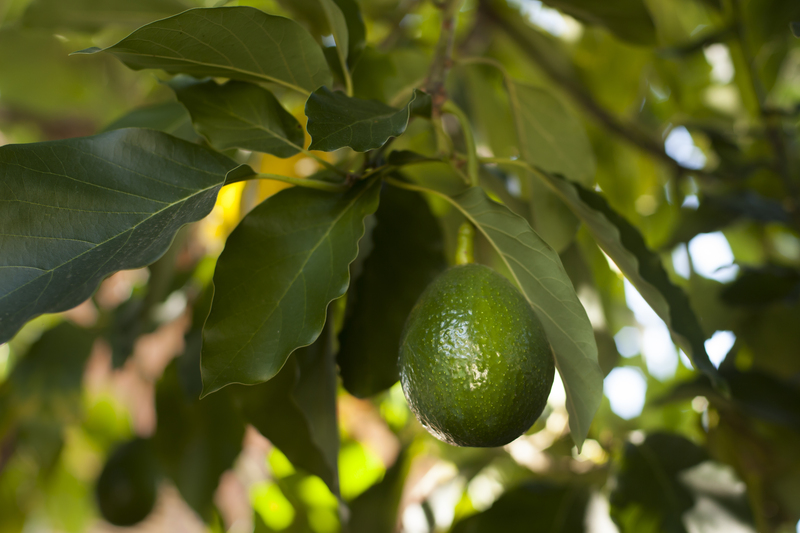Top Starter Tips for Achieving a Show-Stopping Lawn
Looking to transform your patch of grass into a lush, green showpiece? A beautiful, envy-inducing lawn isn't an accident--it's the result of smart planning, reliable techniques, and consistent care. Whether you're a newbie or a seasoned homeowner aiming for the best-looking lawn on the block, these starter tips for achieving a show-stopping lawn can help you turn your yard into a vibrant outdoor haven.
Why a Beautiful Lawn Matters
A well-maintained lawn does more than beautify your property. It extends your living space, enhances curb appeal, adds home value, and provides a safe play area for children and pets. Additionally, healthy grass improves air quality, helps conserve soil, and reduces the temperature around your home.
But what makes a lawn stand out? Attention to detail, dedication, and use of proven techniques are key to creating an eye-catching lawn. Read on for comprehensive tips to help your grass grow greener and your property shine!

Essential Lawn Care Starter Tips for Beginners
1. Know Your Grass Type
The foundation of any show-stopping lawn is understanding your grass variety. Lawns thrive when grass species are suited to their environment. Broadly, grass species fall into cool-season (like kentucky bluegrass, ryegrass, and fescue) and warm-season (such as Bermuda, zoysia, and St. Augustine) categories. Matching your lawn to your climate ensures healthier, more vibrant turf.
- Cool-season grasses thrive in northern climates with cold winters and mild summers.
- Warm-season grasses perform best in southern areas with hot summers and mild winters.
Check your region's USDA Plant Hardiness Zone or consult local nurseries to ensure you're nurturing the right grass for your area.
2. Prep the Soil for a Strong Foundation
A gorgeous lawn starts from the ground up. Soil preparation is a critical yet often overlooked element for achieving lush, green grass.
- Test your soil. Use a DIY kit or send a sample to your local extension service. Aim for a pH range of 6.0-7.0 for most grasses.
- Amend as needed. Add lime to raise pH, sulfur to lower it, or organic matter (like compost) for improved fertility and structure.
- Remove debris. Clear rocks, weeds, and roots before planting or reseeding.
Good soil equals good grass. Addressing soil health early on prevents many future problems and helps you build a spectacular lawn from the start.
3. Choose the Right Planting Method
Depending on your climate, goals, and patience, you can start a lawn from seed, sod, or plugs. Each method offers unique benefits:
- Seeding: Economical, best for large areas, allows root establishment over time.
- Sodding: Instant lawn appearance, excellent for erosion control, results in rapid use.
- Plugging: Works well for certain warm-season grasses, spreads gradually, more affordable than sod.
Pro Tip: Sow seed in the early fall or late spring for the best results, depending on your grass type. Water immediately after planting and keep the soil consistently moist until germination.
Steps to Maintain a Lush, Show-Stopping Lawn
4. Water Wisely
One of the most important starter tips for a vibrant lawn is mastering irrigation. Both overwatering and underwatering can cause stress and damage to your turf.
- Water deeply but infrequently. Aim for 1-1.5 inches per week, including rainfall, to promote deep root growth.
- Water early in the morning. Reduces evaporation and helps prevent disease.
- Adjust to weather conditions. Decrease watering during cool, wet periods; increase during hot, dry spells.
Avoid frequent, shallow watering: It results in weak, shallow roots and increases vulnerability to drought and pests.
5. Master Mowing Techniques
How you mow matters as much as how often you mow. Smart mowing practices encourage thick, healthy growth and help your lawn outshine the rest.
- Set the mower blade high. Taller grass shades roots, conserves moisture, and crowds out weeds. Most lawns do best at 2.5-4 inches.
- Never remove more than 1/3 of the grass blade at a time. Cutting too short stresses the grass.
- Keep mower blades sharp. Dull blades tear rather than cut grass, resulting in ragged tips that brown and invite disease.
- Mix up your mowing pattern. Alternate your route each time; this prevents compaction and ruts in the lawn.
Don't forget to leave clippings on the lawn. They add valuable nutrients back to the soil--a process called grasscycling.
6. Fertilize for Greener Grass
Lawn grass needs a steady supply of nutrients to stay lush. Starter fertilizer tips for lawns include:
- Apply fertilizer at the right time; early spring and fall work best for cool-season grasses, while late spring and midsummer suit warm-season varieties.
- Select a balanced, slow-release fertilizer. Look for products rich in nitrogen, phosphorus, and potassium (N-P-K) with extra micronutrients for optimal growth.
- Follow application instructions carefully. Overfertilizing can burn grass and pollute waterways.
Organic lawn foods such as compost, manure, or seaweed extracts are effective, sustainable, and safe for pets and kids.
7. Control Weeds Before They Take Over
Nothing spoils the look of a show-stopping yard like a weed invasion. Prevent weeds with proactive measures:
- Maintain thick, healthy grass. Dense turf chokes out most weeds naturally.
- Apply pre-emergent herbicides in early spring to prevent crabgrass and other annual invaders.
- Spot-treat visible weeds with targeted post-emergent sprays or hand-pulling.
Stay vigilant, as ongoing maintenance is the best defense against weeds--another crucial tip for a flawless lawn.
Advanced Lawn Care Strategies for Spectacular Results
8. Aerate and Dethatch Regularly
Compacted soil or excess thatch can suffocate roots and stunt growth. For a truly vibrant, enviable lawn:
- Aerate your lawn once a year, especially if your soil is clay-heavy or your yard gets a lot of foot traffic. Rent a core aerator to remove plugs of soil, allowing water, air, and nutrients to reach roots.
- Dethatch if needed. Thatch is the dense layer of roots, stems, and debris atop the soil. Break it up with a dethatching rake when it exceeds half an inch.
Aeration and dethatching rejuvenate tired lawns and create a foundation for strong, healthy growth.
9. Manage Lawn Pests and Diseases
Small brown patches, thinning, or wilting grass? Watch for common lawn pests (grubs, chinch bugs, sod webworms) and fungal diseases. Starter tips to keep your lawn disease- and pest-free include:
- Keep your lawn healthy and robust--the best defense against most pests and diseases.
- Use pest-resistant grass varieties where possible.
- Spot-treat outbreaks early with natural or chemical remedies as recommended by professionals.
- Maintain good mowing, watering, and fertilizing habits to reduce stress and susceptibility.
10. Overseed For a Thicker, Greener Lawn
Over time, lawns can thin due to age, wear, or pests. Overseeding rejuvenates and thickens turf, fills bare patches, and keeps grass lush and full.
- Mow your lawn short and rake up debris before overseeding.
- Choose a grass seed mix appropriate for your climate.
- Water daily for two to three weeks after applying new seed to encourage germination.
Bonus Tips for a Standout Lawn
11. Edging: Create Clean Lawn Borders
Crisp, defined edges set high-impact lawns apart from the ordinary. Edge your lawn along sidewalks, driveways, and flower beds using a manual or power edger for a truly show-stopping appearance.
12. Mulch Beds and Landscape Around Lawn
Frame your lawn with fresh mulch, vibrant flowers, and ornamental plants for a cohesive look. Not only will this make your outdoor space more attractive, but it'll also provide additional weed control and soil protection.
13. Seasonal Clean-Up and Consistency
- Rake up leaves in the fall to prevent smothering grass and disease formation.
- Remove debris, sticks, and trash regularly to keep your lawn looking neat and healthy.
- Apply pre-emergent weed control each spring and perform a winterizing routine each fall for long-term results.

Frequently Asked Questions: Getting Your Lawn to Stand Out
How often should I water my new lawn?
Keep the soil moist until grass is established, watering lightly once or twice a day. Once roots develop (in about 2-3 weeks), switch to deep, infrequent watering for stronger growth.
What's the best time to seed or fertilize a lawn?
Seed cool-season lawns in early fall or spring and warm-season lawns in late spring to early summer. Apply fertilizer during active growing months for each grass type (spring and fall or late spring and midsummer).
How do I prevent bare spots in my lawn?
Regular overseeding, good watering and mowing habits, and prompt pest control will help prevent and fill bare patches, ensuring a thick, green appearance.
The Secret to a Show-Stopping Lawn: Consistency
Achieving a show-stopping, envy-worthy lawn is absolutely possible for beginners and pros alike. The secret? Consistency and attention to detail. Healthy lawns rely on smart planning, choosing the right grass, thoughtful soil prep, proper watering, and ongoing care--but they also require you to stick with it.
Your efforts will be rewarded with a lush, breathable carpet of green that elevates your home and provides the perfect backdrop for family memories, outdoor fun, and neighborhood gatherings. A stellar lawn starts with these starter tips--so get going, and soon you too will enjoy the pride of a show-stopping lawn!
Ready to transform your property? With these starter tips for achieving a show-stopping lawn, your dream turf is just a few smart steps away!



